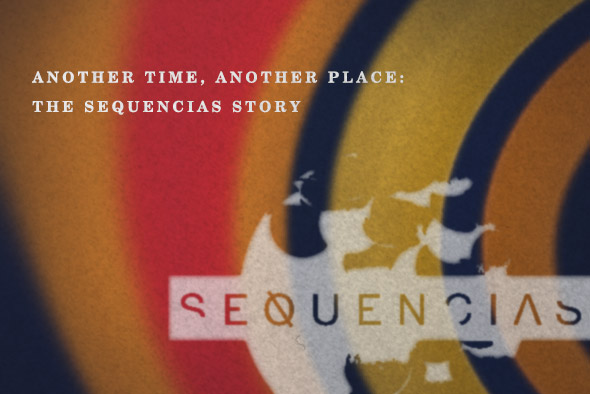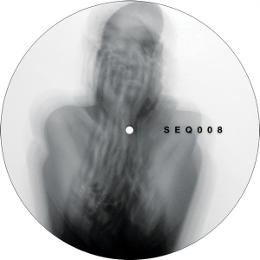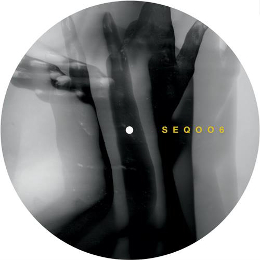Another Time, Another Place: The Sequencias story
 Brendan Arnott speaks to JM De Frias, founder of the New York-based Sequencias which is quietly becoming one of the city’s most interesting techno outposts.
Brendan Arnott speaks to JM De Frias, founder of the New York-based Sequencias which is quietly becoming one of the city’s most interesting techno outposts.
I’m on a crowded bus rattling through Jane and Finch, one of the poorest neighbourhoods in Northwest Toronto. It’s the same place through which the government wants to lay a cross-country oil-pumping pipeline, and the community has been protesting it for months. They’re still angry, but exhaustion is setting in as well. People feel betrayed. “The government must think we’re idiots” someone says, at a protest. On the bus home, I’m listening to a mix that JM De Frias, label head of New York’s Sequencias imprint has curated. A vocal sample emerges from the ether. “People! Wake the fuck up!” it cries. There’s no track list, only a manifesto – “Arbitrary rules and barriers will only narrow the scope of possibility,” it reads. “Absorb your surroundings and find your own voice.” It feels appropriate.
Sequencias is a dance label about industry, but also the blood, sweat and tears, heartbreak and rage that emerge from it. Moments of overwhelming melancholy somehow erupt out of the mechanical rigidity of Orpheus’s “Sunlight Conspiracy”, and Willie Burns somehow makes his frantic analogue jam sessions venture into dreamy, jacking futuristic territory on “Another Place, Another Time”. It’s a label that’s seen almost ten releases in its two year tenure – each bursting with reputable alias-clad techno acts from around the world.
 The hardworking nature of Sequencias founder JM De Frias gives a bit of insight into the label’s prolific nature – his email responses are lightning fast, he’s relentlessly positive while still sincere, and he seems naturally plugged into the lifeblood of the city bustling around him, as he briefly interrupts our Skype conversation to finish coordinating the sale of one of his MPCs. Running Sequencias itself is a multi-tasking operation for De Frias as well, who works at a rehearsal space full time in New York. “Gotta get the money to press those records somehow,” he chuckles.
The hardworking nature of Sequencias founder JM De Frias gives a bit of insight into the label’s prolific nature – his email responses are lightning fast, he’s relentlessly positive while still sincere, and he seems naturally plugged into the lifeblood of the city bustling around him, as he briefly interrupts our Skype conversation to finish coordinating the sale of one of his MPCs. Running Sequencias itself is a multi-tasking operation for De Frias as well, who works at a rehearsal space full time in New York. “Gotta get the money to press those records somehow,” he chuckles.
Championing your own independent label in NYC isn’t the quickest way to become a millionaire, it seems. William Burnett, better known as WT Records founder Willie Burns recently told Beats in Space “I owe a lot of money… I do my business the American way…. I put it on credit.” Similarly, it was only a year ago that iconic New York record store Dope Jams closed its doors on Myrtle Ave, relocating upstate because of financial troubles.
“Oh yeah, music is a financial hole” De Frias admits. “But you gotta be ready to embrace it.” Though he admits that the process isn’t always a flowery one, De Frias’s optimism in the industry is largely unshaken. “Selling records, it’s sort of a weird thing” he shrugs. “Sometimes you put out a record that you think is gonna sell, and sometimes it doesn’t – it’s a gamble. But as long as you believe in the record, you’re good. I have no complaints of any records not selling, or anything like that. I don’t regret putting anything out and I don’t think I will ever regret it, but yeah… that’s the struggle: selling the records. But if your mind is in the right place, and you’re doing it for the right reasons, you’ll be fine.”
Selling records wasn’t challenging for Sequencias, which kicked off to a rumbling start in 2011 with a massive release bringing together the insomnia-infused rumble of Hieroglyphic Being’s “Night Thoughts (2am remix)”, Specter’s slow-churning corrosive acid house, and Aroy Dee’s melancholic analogue “Shuffle”. Hardwax called it “retro Chicago house” but there’s way more to it than that: Sequencias has a skill for giving a pulse to mechanical sounds – manifesting sweat, blood and flesh out of hard-angled analogue equipment and creating something more soulful than the sum of its parts. The release sold out almost immediately, and subsequent $60 price tags on Discogs provided the impulse for De Frias to repress it. “I think that killed the inflation… we’re good now” De Frias tells me, clearly relieved to restore some accessibility to the release.
De Frias’ own story began back in 2008, when he arrived in New York from the Dominican Republic. The formation of Sequencias didn’t happen on a whim, and coming to America afforded an opportunity that was “just a fantasy” for De Frias when he was overseas. “Ever since the days when I was living back on the Island, I wanted to be involved in the music business, somehow, in an independent way,” he states. “Being able to move to NY led the way for the idea – it became a proper plan, whereas beforehand there was absolutely no way for me to press records over there.”

On arrival, De Frias (pictured above) felt an immediate connection to the city. “Instantly, I knew it was home” he tells me. “I was feeling caged creatively back home, so coming here and being able to actually express what you love and have a following who are actually on the same vibrations and can understand – that’s the place you need to be, creatively.”
Some of Sequencias’ international ties still remain strong, with De Frias collaborating with Leonard Posso and Dominican photographer and fashion designer Andrea Robiou on the label’s artwork – blurred, overlapping images of contorted bodies and faces where it’s impossible to tell if the subjects are terrified or ecstatic. Speaking of the collaboration, De Frias remarks on the geographical distance between them. “The funny thing is that she’s still back on the Island, she’s never been off it” he muses. “It sorta reminded me of myself, being back home and not being able to do what I wanted to do in a global way.”
Certainly having my own idea of what a “New York sound” is, I ask De Frias what kind of sonic reputation he associates with the city. He pauses and mulls the question over. “When I think of New York and the New York sound, you’re talking about the (Paradise) Garage; Larry Levan. You’re talking about Mancuso and The Loft, Body And Soul, Shelter, Masters At Work, Todd Terry, etc… that’s New York to me. So it’s hard to pin down a sound these days, because music is a global thing now. You can’t say ‘This comes from NY, so this is the NY sound’ and now that everyone’s on the web, everyone’s on the same page.”
Has Sequencias reached back to the Dominican Republic? I ask. “Oh not at all. Not in any way,” he tells me adamantly. “There’s a tiny scene there, but they do what’s trendy… last time I was there, they were into the slow, Soul Clap, Wolf and Lamb style thing that was going on back then. So…I don’t think they’ll adopt it.” Pausing for a second, De Frias admits that there are other constraints to consider with regards to getting a global audience. “Also, I only put out vinyl, so it’s not available to them in the country at all.”
Despite the pockets of inaccessibility, De Frias remains positive about the global spread of influence and ideas. “Trust me – globally, people are buying more records, getting way more interested in vinyl again. We, as humans, realize that art needs to be tangible. You need to own art; you need to see it, and having files gathering dust on your computer just diminishes your ability to have appreciation for it. And realizing that, people are slowly coming back to the tangible way – vinyl records.”
“You could be playing an acid line and be emotional as fuck, know what I’m saying?”
The way De Frias gushes about the physical objects of music, it makes me think of my own fondest digging experiences – finding a white label full of great edits, removed from all information, history, and identity – But JM’s history departs from my own, as he tells me why exclusivity isn’t so important to him when I ask if he has any records he considers “secret weapons”. “Well… the thing is, when I get those kinda records, the first thing I wanna do is share them” he laughs. “I hang out with a lot of collectors here in New York that are big-time, I’m talking like, 60,000 records and stuff. So that experience of turning someone onto something new is part of the fun for me – to find that record that none of them have, but that’s so hot that you have to show it off.” It seems like a very communal way to approach music, I suggest. “Dance music as community – exactly, bringing people together with sounds, that’s the whole point.” he responds, animated.
Techno in New York has been a burgeoning scene as of late, and Sequencias has many contemporaries in similar, but separate streams – between Voodoo Down Records, WT Records, L.I.E.S and Anthony Naples’ Proibito imprint, there’s a lot going on in a relatively small geographical space. I ask De Frias if there’s a lot of crossover, or if these scenes are still segmented. “Well, most of the people you’ve mentioned I have met personally – so yeah, it’s sort of like a playground for all of us; doing sort of the same thing, but in a different way. Every label has its own personality – so everyone’s doing their thing, but we’re all connected.” Does it create inter-label competitiveness? “I don’t think so” he responds, diplomatically. “I guess everyone is trying to do their best, but not in a competitive way – just a personal way. Every label’s got their own personality.”
And what would Sequencias’s personality be? “Pushing boundaries for the artist… Pushing them a little bit out of their comfort zone. The artists are my inspiration” De Frias says, his voice growing in energy. “And I’m lucky to get to give them a different platform to release stuff on, that they’re going to  come across somehow differently from how they’ve done before. It’s sort of presenting them in a new light, a different way, changing the context, what people think of when they hear that artists’ name, pushing boundaries within the artists’ comfort as well – I know they’re so talented that I can push them as far as I can.”
come across somehow differently from how they’ve done before. It’s sort of presenting them in a new light, a different way, changing the context, what people think of when they hear that artists’ name, pushing boundaries within the artists’ comfort as well – I know they’re so talented that I can push them as far as I can.”
The label’s strength might also be in the relative anonymity it lends to its contributors, who often take on multiple pseudonyms. Even though Discogs enthusiasts and diggers can probably figure out who’s who, there’s still some liberation in there. Nick Lapien is currently utilizing his second alias on the label with Sequencias’ upcoming Nepal EP – just earlier this year he banged out the superb A Machine Of Desire EP under his Metropolis alias. What does Nick think of the label’s personality? “He approaches electronic music from an art-perspective without losing sight of the dance floor” Lapien tells me. “It shows great personally and takes a ton of courage to run a label like that”.
Collaboration is important for De Frias, who recently just finished I Have No Eyes, And I Must See, a searing EP alongside Jak Beat exponent D’Marc Cantu concerned with cosmic awareness. “I have to be a fan of whoever I’m working with” De Frias explains. “They have to be able to capture something I can’t, a unique input into the process. It’s like slamming two different elements together and letting the results ride. So yeah, Nick (D’Marc Cantu) and I collaborated really naturally… just feeling what was going on in the room. That’s the thing… if you’re trying to do a record, like, with the intention that it’s purposefully ‘GONNA BE HOT’ – his voice trails off… “I dunno, man. The way I collaborate is just having fun with the tools and letting it be. Have fun.”
That interaction and spontaneity is part of what makes the music on Sequencias stand out amongst your hordes of emotionless, blank-faced serial killer techno cuts, and De Frias admits that all his releases have touched him in one way or another. “I’m very photographic with music, so I’m always conjuring an image of something while I’m listening, and that’s the way that I know ‘I have to sign this record,’” he tells me. “When I get an overwhelming feeling, when an image manifests in front of me and I see something.”
“What kind of images?” I enquire, and he laughs bashfully. “Well, uh, I really connect music with all aspects of life; emotions, feelings etc. When I write music there are always feelings involved. And it doesn’t really matter what equipment or instrument the tracks are made with… you could be playing an acid line and be emotional as fuck, know what I’m saying?” Humanity is something that’s just as discoverable in cold analogue steel, De Frias argues. “In having a robotic sound, I feel like everything is still emotional, at least in a way – that emotion could be a lot of things. It doesn’t have to be melancholy. It could be rage, it could be anything.”
 It’s one of Sequencias’ greatest strengths as a label perhaps, the ability to infuse the full emotional spectrum into their catalogue. Nick Lapien feels similarly, describing his Nepal EP as inspired by “improvisation, jamming, human timing and musicality… moody, extended improvised electro-acoustic excursions” that were kept as spontaneous and natural as possible during recording. Even when De Frias isn’t actively jamming out tracks with others on his label, he values being involved in the process. “There’s a long thinking process behind the whole release, believe me” De Frias tells me, the incredulity in his voice hinting at many a late night. “By the time the release is ready, there has been a LOT of work that’s preceded it. I’m sure the artists I’ve worked with can testify to that” he laughs. “Sometimes I get really obsessed with getting the best that I can from them, and from myself. Any hurt feelings, they get over” he states, continuing to laugh.
It’s one of Sequencias’ greatest strengths as a label perhaps, the ability to infuse the full emotional spectrum into their catalogue. Nick Lapien feels similarly, describing his Nepal EP as inspired by “improvisation, jamming, human timing and musicality… moody, extended improvised electro-acoustic excursions” that were kept as spontaneous and natural as possible during recording. Even when De Frias isn’t actively jamming out tracks with others on his label, he values being involved in the process. “There’s a long thinking process behind the whole release, believe me” De Frias tells me, the incredulity in his voice hinting at many a late night. “By the time the release is ready, there has been a LOT of work that’s preceded it. I’m sure the artists I’ve worked with can testify to that” he laughs. “Sometimes I get really obsessed with getting the best that I can from them, and from myself. Any hurt feelings, they get over” he states, continuing to laugh.
When I asked Lapien about JM’s obsessive nature, he admits that De Frias has a tendency to pore over premasters and temporary versions of tracks, “noticing subtle differences with the rough cuts I usually send over… even though that sometimes creates small discussions about placements of certain sounds or subtle changes.” Lapien doesn’t seem frustrated by the constant consultations, though. “His input has eventually always useful and constructive, I have a lot of trust in JM’s ability to compile a consistent and coherent EP.” he tells me. “Sometime you can get so into your own material that it’s hard to objectively listen to it.” Following Lapien’s Nepal release, Sequencias will be unveiling future projects from Echo 106, and some “crazy as fuck cosmic jazz darkness” from Healing Force Project that De Frias admits he’s “currently still high on.”
I can’t help it – after talking to De Frias, I creep on his Facebook page, and find that he’s recently posted about Bolivar Arellano’s photo documentation of Puerto Rican life in New York in the ‘70s – photos of police-beaten protestors, friends laughing on graffiti riddled subway cars, musicians side by side with militant activists. The photos show a side of the same diasporic history that De Frias has joined, and it feels like a perfect snapshot of what Sequencias is doing: disrupting expectations and narratives, showing that underneath the industrial grittiness of New York, there’s community, music, and soul. In other words – it’s emotional as fuck.
Interview by Brendan Arnott
Original photography courtesy of Julieta Morales
Sequencias facebook / soundcloud